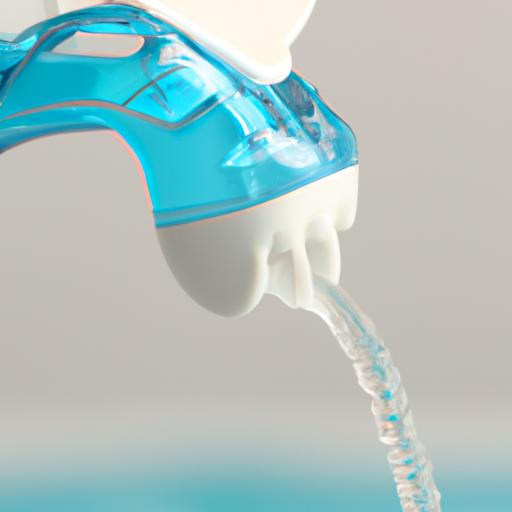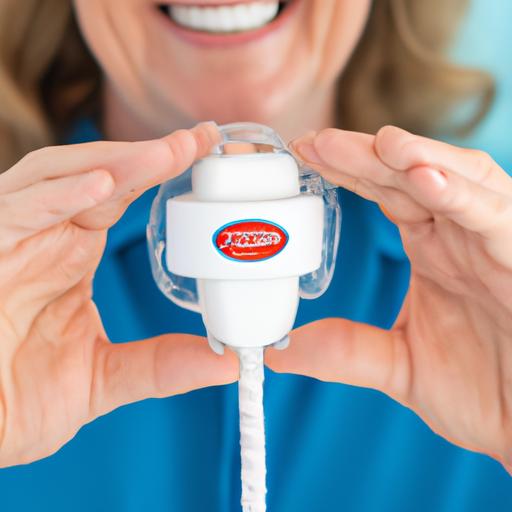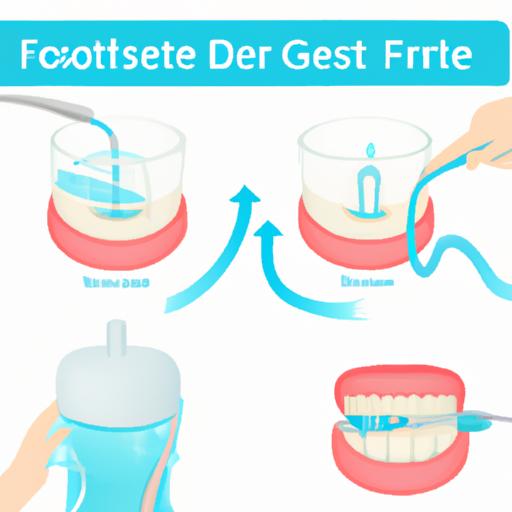Discover the benefits of using water pressure to clean teeth. Learn how this gentle technique improves oral health and reduces gum disease risks.
Introduction
Maintaining proper oral hygiene is essential for a healthy smile and overall well-being. Regular brushing and flossing are the cornerstone of a good oral care routine, but have you ever considered the benefits of using water pressure to clean your teeth? In this article, we will explore the power of water pressure as a gentle and effective technique for maintaining optimal oral health.

Water flosser device effectively cleaning teeth with a stream of water.
Understanding Water Pressure for Teeth Cleaning
Water pressure refers to the force exerted by water when it is released from a device. When it comes to teeth cleaning, water pressure plays a crucial role in removing food particles, plaque, and bacteria from the surfaces of our teeth. Unlike traditional brushing techniques, which rely on physical contact with the toothbrush bristles, water pressure can reach areas that are difficult to access, such as the spaces between teeth and along the gumline.
Water pressure devices, such as water flossers or oral irrigators, utilize a stream of water to dislodge and flush away debris. The pressure of the water jet can be adjusted to suit individual preferences and needs, ensuring a comfortable yet effective cleaning experience. Compared to other cleaning techniques, water pressure offers a gentle and non-abrasive alternative while providing thorough cleaning.

Discover the benefits of using water pressure for gentle and effective teeth cleaning.
Benefits of Using Water Pressure to Clean Teeth
Gentle yet Effective Cleaning Action
One of the key advantages of using water pressure to clean teeth is its gentle yet effective cleaning action. The pulsating water jet gently massages the gums while dislodging and removing plaque and bacteria. This gentle action is particularly beneficial for individuals with sensitive gums or those prone to gum bleeding. Unlike traditional flossing, which can sometimes cause discomfort or irritation, water pressure provides a soothing and comfortable cleaning experience.
Removal of Food Particles and Plaque from Hard-to-Reach Areas
Traditional brushing and flossing techniques may not always effectively reach all the nooks and crannies of our teeth. However, with water pressure devices, the powerful stream of water can easily access and clean those hard-to-reach areas. This is especially beneficial for individuals with braces, dental implants, or other dental appliances that make cleaning challenging. By flushing out food particles and plaque from these areas, water pressure helps prevent tooth decay, gum disease, and bad breath.
Massaging Effect on Gums for Improved Oral Health
Healthy gums are the foundation of a healthy smile. Water pressure devices not only clean the teeth but also provide a massaging effect on the gums. The pulsating water jet stimulates blood circulation in the gum tissues, promoting healthier gums and reducing the risk of gum disease. Additionally, the gentle massage can help alleviate gum inflammation and tenderness, providing relief for individuals with gum sensitivity or gingivitis.
Reduction of Gum Disease Risks
Gum disease, also known as periodontal disease, is a common oral health concern that can lead to tooth loss if left untreated. Water pressure devices can play a significant role in reducing the risks of gum disease. By effectively removing plaque and bacteria, water pressure helps prevent the development of gum disease and reduces the chances of gum inflammation, gum recession, and gum pocket formation. Regular use of water pressure devices, in conjunction with proper brushing and flossing, can contribute to a healthier and more resilient oral environment.

Simple steps to effectively use a water flosser for your oral care routine.
How to Use Water Pressure for Teeth Cleaning
Now that we understand the benefits of using water pressure to clean teeth, let’s explore how to incorporate this technique into our daily oral care routine.
-
Choosing the Right Water Pressure Device: There are various water pressure devices available in the market, such as water flossers and oral irrigators. It is essential to choose a device that suits your needs and preferences. Consider factors such as water pressure settings, reservoir capacity, ease of use, and additional features like built-in timers or massage modes. Reading reviews and comparing different options can help you make an informed decision. Best Water Flosser HQ provides comprehensive reviews and recommendations to assist you in finding the right water pressure device for your oral care needs.
-
Step-by-step Guide for Using Water Pressure to Clean Teeth: Using water pressure devices is relatively simple. Here’s a step-by-step guide to help you get started:
- Fill the reservoir of the device with lukewarm water or a dentist-recommended mouthwash.
- Select the appropriate water pressure setting according to your comfort level.
- Lean over a sink to avoid splashing water around.
- Place the device’s nozzle in your mouth, aiming it between your teeth and along the gumline.
- Activate the water flow and move the nozzle systematically along each tooth surface, pausing briefly between teeth.
- Continue until you have cleaned all tooth surfaces, ensuring you reach both the front and back of your teeth.
- Once done, turn off the device and empty any remaining water from the reservoir.
- Clean the nozzle and device according to the manufacturer’s instructions to maintain hygiene.
-
Precautions and Best Practices: While water pressure devices are generally safe and easy to use, it is essential to follow a few precautions and best practices:
- Start with the lowest water pressure setting and gradually increase if needed, to avoid discomfort or gum irritation.
- Avoid directing the water jet directly at your gums with excessive force, as this may cause gum damage.
- Use the device at least once a day, preferably after brushing and flossing, for optimal results.
- Replace the nozzle or attachment as recommended by the manufacturer to ensure proper functioning and hygiene.
-
Recommendations for Suitable Water Pressure Devices: If you’re considering purchasing a water pressure device, here are a few notable options to explore:
- Amazon Waterpik Water Flosser Cordless: This portable and cordless water flosser offers convenience and ease of use, making it a popular choice among users.
- Braun Waterpik Water Flosser: Known for its quality and performance, this water flosser by Braun combines water pressure and pulsations for an effective cleaning experience.
- Piksters Hydropik Cordless Water Flosser: This compact and travel-friendly water flosser provides adjustable water pressure and multiple cleaning modes to suit individual needs.
Conclusion
Incorporating water pressure into your oral care routine can revolutionize the way you clean your teeth. Its gentle yet effective cleaning action, ability to reach hard-to-access areas, and benefits for gum health make it a valuable addition to traditional brushing and flossing. By investing in a suitable water pressure device and following proper usage techniques, you can achieve a cleaner and healthier smile. So why wait? Start exploring the world of water pressure for teeth cleaning today and experience the difference it can make in your oral hygiene journey.




